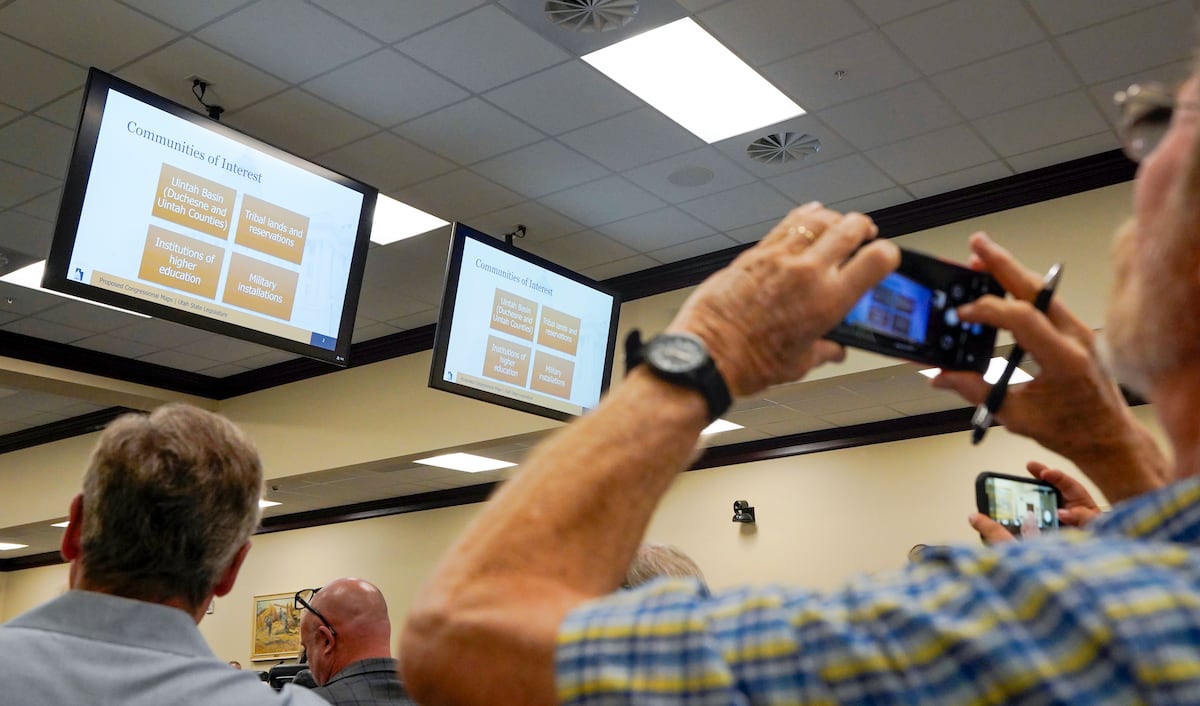Utah’s new judicially adopted congressional map creates a Democratic-leaning district for the first time in decades. But how blue is the new seat?

Democrats in Utah are abuzz this week after a judge adopted a map for the 2026 congressional elections that creates a district that leans their way for the first time in decades.
This new district, built around the northern portion of Salt Lake County, does indeed include the bluest portions of a red state. And depending on which elections from the past decade are included in the analysis, it favors Democrats by somewhere between 13 points and 17 points.
But there have actually been several electoral anomalies in Utah over that span, so it’s best to look at a range, rather than a precise number.
Consider the gubernatorial election last year. If we just approach it as Republican Spencer Cox vs. Democrat Brian King, then King got 11.5 percent more of the vote than Cox inside the new district. But remember the race also had former Rep. Phil Lyman running a write-in campaign. Ten percent of voters in that election cast a ballot for someone other than Cox or King, most of them for Cox’s challenger from the right — Lyman.
(Francisco Kjolseth | The Salt Lake Tribune) Republican Utah Gov. Spencer Cox, who is running for reelection, debates Democratic challenger state Rep. Brian King and Libertarian opponent Robert Latham, from left, at Salt Lake Community College on Wednesday, Sept. 11, 2024.
So that either counts as an 11.5 percentage point victory for the Democrat or something closer to 1.5 percentage points, considering.
Next, let’s look at the President Donald Trump factor.
Trump has been on the presidential ballot three times in Utah in the last decade — 2024, 2020 and 2016. By Republican standards in Utah, he did poorly, losing the district by between 21 and 24 percentage points.
He never cracked 60% statewide. That’s historically bad for a Republican in Utah. In races without a significant third-party candidate, Trump’s 2024 and 2020 performances were the worst for a Republican presidential candidate since Barry Goldwater lost to Lyndon Johnson in 1964.
And looking at races where there was a major third-party candidate on Utahns’ ballot — Evan McMullin in 2016, H. Ross Perot twice in the 1990s, and segregationist Gov. George Wallace in 1968 — the only GOP showing that compares to Trump’s 46% in 2016 is George H.W. Bush’s 43% the first time Perot ran in 1992.
Those races change the perceived lean in a big and questionable way.
Speaking of McMullin, he also is responsible for another strange Utah election that complicates the math. In 2022, Democrats opted not to nominate a candidate to run against U.S. Sen. Mike Lee, instead tossing their support behind McMullin.
(Leah Hogsten | The Salt Lake Tribune) From left, Sen. Mike Lee and independent challenger Evan McMullin participate in a debate ahead of the election for U.S. Senate at Utah Valley University, Wednesday, Oct. 17, 2022.
The independent dominated in precincts that now make up the new congressional district, beating Lee by nearly 32 percentage points. But how many of those are actual Democrats? It’s hard to tell.
In the congressional races that same election, Democratic candidates received 52% of the vote, while McMullin got 57% — meaning there was crossover, but it wasn’t massive.
There is one more flukey election in 2016.
That year, in the race for attorney general, the Democratic candidate dropped out before Election Day, and Republican Sean Reyes won the area now part of the new district by just over two percentage points — the only Republican in a decade to do so. But how do we consider the results in a race without a real opponent?
Based on Salt Lake County results from 2024, eight out of 10 of the “other” votes cast in the gubernatorial election were write-ins, presumably for Phil Lyman. Those are votes cast by people who thought Cox was not conservative enough, meaning they aren’t likely to vote for a Democrat in 2026. Considering that, lowering King’s 11.5 percentage point win by those eight points results in a 3.5 percentage point win for Democrats.
Along those lines, based on the larger county-wide voting patterns, reducing McMullin’s victory in those precincts by 5 percentage points to about 27 points — which falls roughly in line with Trump’s losses.
Making those two adjustments, and keeping the 2016 attorney general race, results in a Democratic advantage is 12.4 percentage points.
If you leave the Cox defeat and the McMullin win in the district unadjusted and only go back as far as the 2018 elections, a Democrat has a 17-point advantage.
That is not a cakewalk. Republicans have had similar advantages in districts and lost. Still, it is considerable and the kind of daylight that Utah Democrats have not seen in decades.
Here are four ways to approach trying to gauge how much the Utah’s new 1st Congressional District in Salt Lake County favors Democrats:
Including the statewide races for president, U.S. Senate, governor and attorney general since 2016: Democrats +13
Adjusting the margin of Gov. Spencer Cox’s 2024 loss in the new district by accounting for voters who cast ballots for write-in candidate Phil Lyman, and also adjusting Evan McMulin’s margin of victory downward to account for those who voted for him, but not Democratic congressional candidates in the same election: Democrats +12%
Only taking into account elections starting in 2018 forward, without adjusting the results: Democrats +17%
Counting elections since 2018, but including the same downward adjustment as above for the margins for Cox and McMullin: Democrats +15%
Note to readers • This story is available to Salt Lake Tribune subscribers only. Thank you for supporting local journalism.
Source: Utah News
